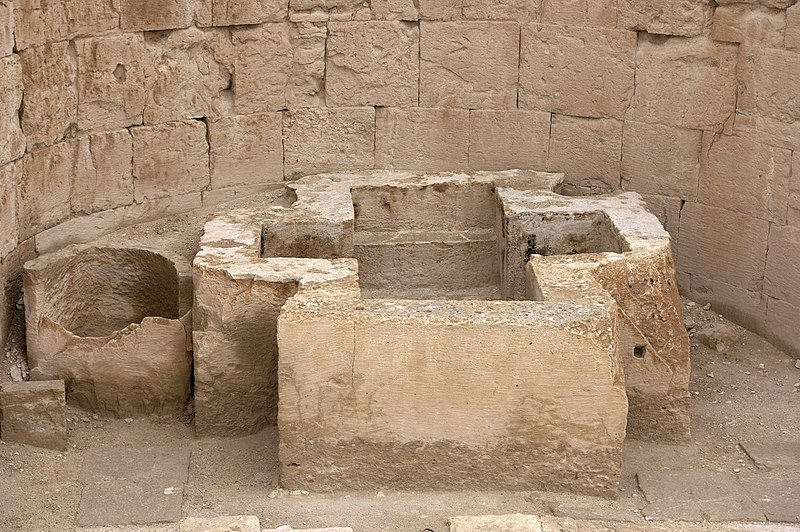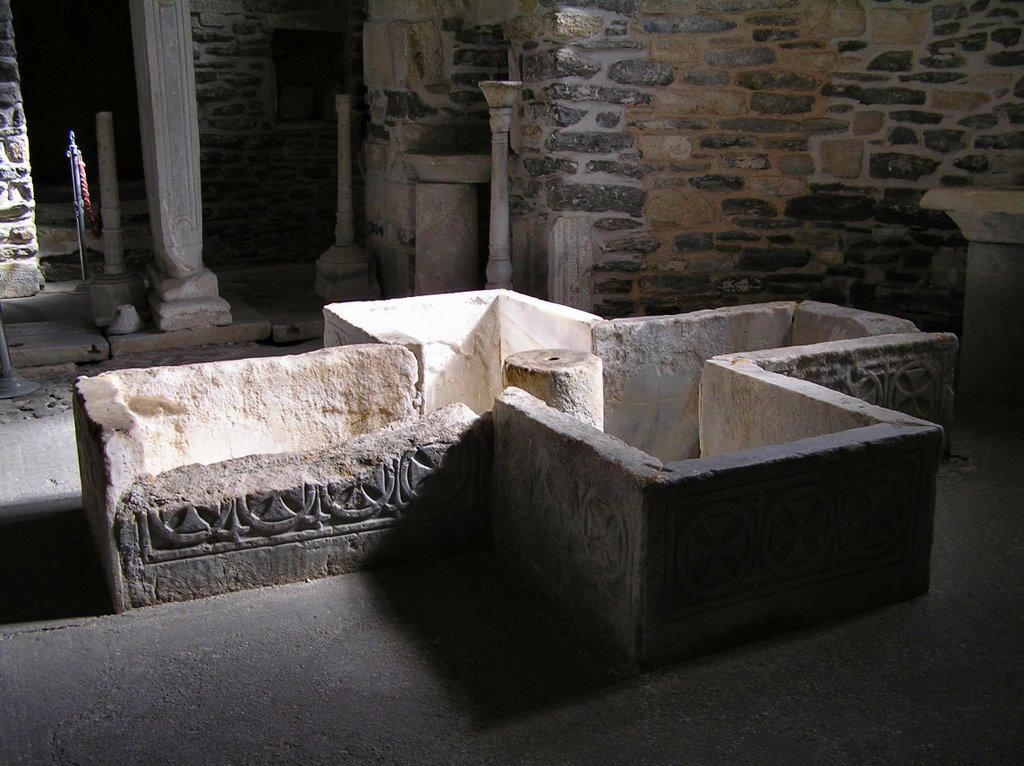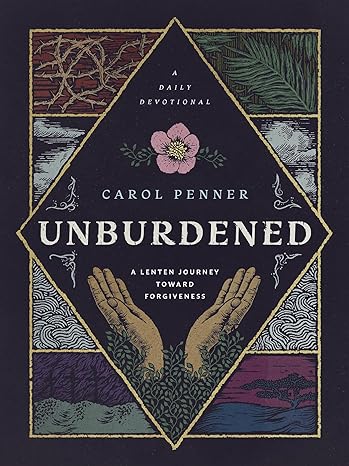Being born is arguably the most important experience of your life because without that nothing else can happen! Today I want to talk about new birth as a metaphor for salvation.
Birth is central to being human. Every human being has been born and some here have experienced giving birth. Birth is by definition not an individual experience. There is always a mother that gives birth and without the embrace of people who care for us, no baby would survive. Communities are the location where new birth takes place.

One of the most memorable experiences I’ve had was being present at the birth of my friend’s baby. A tiny wrinkled red creature emerging into the world, eyes squeezed shut, arms trembling. As amazing as it was seeing a baby being born, it was equally moving seeing the baby placed into her parents’ arms.

She was born into the embrace of her larger extended family who were all thrilled with her arrival.
Because birth is so ubiquitous, and so meaningful in our lives, it’s a very dramatic and potentially useful metaphor for our relationship to God.

Many of you are familiar with the phrase “being born again”. In fact I know that for some of you, it was one of the main images used to describe salvation to you. When I was a young teenager, I was told that I must be born again. It was made clear to that this would be a one-time life-changing event, determining where I would spend eternity. I was specifically told that no one else could have anything to do with that being born again experience: it was between me and God.
However for me, the term “born again” became problematic because I was a part of a church that used that term to divide the Christian world. If you did not use the term “born again” then they did think you were Christian. So Catholics, who have a long and rich tradition of talking about salvation, were not considered Christian because they did not use “born again” language. I found the “born again” community to be very expansive in one sense, in that they were inviting many people to join them, they were like a hand beckoning people into the church. But the born again church I was part of was very exclusionary, they may have been a hand in the body of Christ, but they looked at the rest of the body and said, you are not part of the body of Christ, only people who talk and act like us are Christians.
Maybe you, like me, tend not to use “born again” language to talk about your relationship with God because of your experience with a community like that. But I am hoping this sermon will give us pause before we throw the metaphorical baby out with the bathwater. I want to look at this image of rebirth in a broader Christian context. While “new birth” imagery became extremely popular in twentieth century evangelicalism, it has a long and rich history.
The passage from John that we read today contains the phrase ‘you must be born again’, and it contains John 3:16, quoted on billboards and sports event posters everywhere. Because they are so close together, I think in most of our minds “being born again” is linked solidly with the words “believe” and “eternal life”.

But the phrase “being born again” is located in a story, not just next to this one verse. And it’s the story of Nicodemus, that curious Pharisee who comes by night to visit Jesus. Nicodemus is a member of the Sanhedrin; he is an important, powerful man. He declares that Jesus is a great teacher. He says no one could do the signs Jesus was doing unless they came from God.
That’s when Jesus says to Nicodemus, “Very truly I tell you, no one can see the kingdom of God unless they are born again.” Is Jesus saying Nicodemus is born again (because he can see), or is he inviting him to be born again? The story is ambiguous. It doesn’t tell us what Jesus was thinking, it only gives his words.
Then Jesus says these amazing words: “The wind blows wherever it pleases. You hear its sound, but you cannot tell where it comes from or where it is going. So it is with everyone born of the Spirit.” John 3:8 I wonder how people would perceive Christianity if everywhere you went this was the verse being advertised, if this was the verse connected with being born again: “the wind blows where it pleases”! You cannot tell where it comes from or where it is going.
The story ends with Jesus saying that “whoever lives by the truth comes into the light, so that it may be seen plainly that what they have done has been done in the sight of God.” Again this is ambiguous in terms of Nicodemus…he has come by night to see Jesus. Is Nicodemus walking in the light or isn’t he? Nicodemus shows up two more times in John’s Gospel. Once he is in the company of Pharisees, where he advocates for Jesus getting a fair trial. (John 7)

And then after Jesus dies, we meet Nicodemus again, this time in the company of Joseph of Arimathea. (John 19). Together they take down the body of Jesus from the cross. Nicodemus brings 100 pounds of myrrh and aloes and wraps Jesus’ body for burial with strips of cloth. This is a famous painting of that scene by the painter Caravaggio…is this Nicodemus looking straight at us?
Nicodemus never comes out and says to Jesus, “I believe you are the Messiah,” or “I give my heart to Jesus.” We don’t know precisely what Nicodemus is thinking. But we do see him helping Jesus after his death, even when it was obviously dangerous to do so. Why would Nicodemus be risking his reputation to help someone condemned and crucified? Has the wind of the Spirit blown right into his heart, into a member of the Sanhedrin? How surprising!
From his actions, it seems to us that Nicodemus has gone from being in one community (the community of Pharisees arrayed against Jesus), to being part of the community that is supporting and helping and ministering to Jesus.
John 3:16 is used so often to emphasize that the only thing that’s important is what you believe. That verse is taken from this story! A story where the main character never comes out and makes a statement about belief, but who shows by his life whose team he is on. A story that links being born again with the Spirit as mystery and wind.
We see this image of “being born again” a couple of times in the gospel of John. It also is used by a variety of other New Testament writers. I Peter reads, “You have been born anew” (I Peter 1:3).
And then there is Paul’s passage from the letter to the Romans where he talks about dying to sin and being a new creation. This passage was very significant in the early centuries of the church; it shaped the practice and theology of baptism. Baptism symbolized that transitional moment of rebirth. For birth to happen, one had to die. Going under water in baptism symbolized death…dying with Christ. Some of the earliest records we have of baptism record that the church celebrated baptism on the Saturday between Good Friday and Easter. They chose that day to reinforce the idea that you were dying to sin, you were joining in Jesus’ death, Jesus’ burial.


Here are some modern adaptations of that, modern architects wanting to reinforce the idea that baptism is connected to dying on the cross with Jesus.

This next picture is a modern baptismal font in Salisbury Cathedral in England


People wouldn’t get into this tank, but it’s actually a fountain, with water dripping over the edges…since it’s the Church of England, they would mostly be baptizing babies, they’d take water from this and pour it on the baby). The idea they want to get across is that you are joining with Jesus in the cross, participating in his death.
But sometimes ancient baptismal fonts looked like this:

Archeologists have found that sometimes they were shaped like sarcophaguses. When you got baptized, you are climbing into your grave, your coffin. Your old self dies with Jesus. You are going down into the grave with Jesus.

This modern baptismal pool looks pretty much like a coffin, in my eyes. The early church would have seen this as entirely appropriate because one’s old sinful self dies in baptism. It’s a pretty visceral question here, are you willing to die in order to be reborn?
If you have been baptized, I wonder whether death and rebirth were emphasized as part of that ritual. When I think back to my baptism, I remember it being explained that the water was for cleansing. I don’t recall them talking about death very much. But maybe sprinkling or pouring lends itself more to the cleansing image than the going down, going under the water into death.

Scripture describes Jesus’ resurrection as a new birth. Colossians 1:18 reads, “…he is the beginning, the first-born from the dead….” Very old artistic images of the resurrection often show Jesus emerging from a womb-like tomb…he is reborn.

In baptism, we go down in the water to death with Christ, and rise up to new life with him.

If we die with Christ, so in Christ all shall be made alive. (I Cor. 15:22) In this painting we see Jesus dragging us out of our tombs. Archeologists found an ancient baptismal tank in Rome. It’s from the 5th century; carved on its side were these words: “…seek your cleansing in this stream that takes the old and gives a new person back….the church gives birth to children conceived of God, delivered in this water….Children of the water, think no more of earth….birth in this stream is birth to holiness.” (Regina Koehn, A place for baptism, Chicago: Liturgy Training Publications, 1992, p. 10).

The idea that baptism is rebirth was reinforced by earliest Christian artwork from the catacombs in Rome. They show someone being baptized…they are naked, or mostly naked. Just like a baby is born naked, so the newly baptized person is not clothed. We have written records from the fourth and fifth century that recount how on Holy Saturday, candidates for baptism would go before the congregation and say the creeds, (maybe the Apostles creed that we read together on Easter Sunday) to show their faith, then they go to a baptistery. That’s a special building for baptism, which was divided into two sections, one for women and one for men. Sometimes there would be two separate baptisteries for women and men. There they would disrobe, enter the baptismal waters naked like a baby, and when they emerged, white robes would be put on them. Then in their new clothes they would go and take communion for the first time with the congregation.
Baptism, rebirth, was never portrayed as something only personal between you and God. Rebirth happened in community, you were received into the loving arms of your community. Baptism was public, it was something you could only do in the community of faith, and it meant that you were expected to join the work of the kingdom of God.
The early Anabaptists in the 1500s rejected many of the trappings and rituals of baptism, but they held onto the idea of death and rebirth as a metaphor of salvation. Conrad Grebel, in a letter to Thomas Muntzer wrote that the person being baptized “…must be and has become dead to sin and is walking in newness of life and spirit.”

The Schleitheim Confession of 1527, an important document of the earliest Anabaptists, explains that baptism is for “those who walk in the resurrection of Jesus Christ, and wish to be buried with Him in death, so that they can be resurrected with Him.” (GAMEO, “Baptism”)

For Anabaptists the rebirth of baptism meant a new life in the kingdom of God. The reborn person was expected to follow in Jesus’ footsteps. Baptism was always connected to membership in a specific worshipping community. That is still the theology of Mennonite churches everywhere. You don’t get reborn into your own heart, or even into the universal vague Mennonite church, you are reborn into a specific congregation. This congregation will guide and teach you and will hold you accountable for your new life in Christ. Rebirth happens in community.

Jesus is the way to rebirth, the way to new life, the way through the waters of baptism to membership in the kingdom of God. I’ve given you a quick thumbnail historical summary of the metaphor of “being born again”, because I wanted to show you that this metaphor was used in a deep way long before the last 100 years in North America.
But is it a metaphor that we want to use today? Would I use this metaphor to describe a part of my own faith experience? I made a decision, or probably more accurately a series of decisions, to become a Christian between the ages of 14 and 17; one of them was being baptized. That happened in community. Some people would call that being born again.
But something else happened to me a few years later when I was in my early twenties. One summer day, an ordinary day, I was working at a summer job, and the love of God came over me. It was an immersion in the love of God, I suddenly saw how lovable everyone is, and I felt an overwhelming love for everyone I met. It lasted a couple of days. It was life changing. The world looked different through the eyes of love.
For me, it was like the opening of a door. I had been in the vestibule of Christian faith, and then I was all in. Or maybe I could say I was birthed into a new way of seeing. I didn’t get myself there, that’s for sure. I didn’t manufacture it myself, and it has only ever recurred in little glimpses. The Spirit blows where it wills. Though the feeling of that spiritual awakening subsided after two or three days, I still had the memory of that time, which is something I could treasure as a gift. A gift I share in the congregation, a gift I work out in community. I can describe that as an experience of being born again.
I share this experience as my own…not everyone has an experience like that, the wind blows where it will. But if I have to find language to describe that…this metaphor is helpful.
I want to share one last application of this metaphor that I found this week. In 1967 Martin Luther King delivered a speech called “Where do we go from here?” He used the story of Jesus and Nicodemus. He observed that Jesus didn’t focus on changing this thing that Nicodemus did, or that thing. Jesus told Nicodemus, you must be born again. King goes on to say that in America, it’s not about changing this thing or that thing. It’s about changing the whole structure. King’s message was, “America, you must be born again.”
It happened this week that I went straight from reading King’s words, to scanning the news headlines, where I saw the shooting of Walter Scott in the United States. Yet another unarmed black man shot in the back by a white police officer. America is not yet born again. What would new birth look like in that community?
I don’t want to ask you whether you have been born again, because I know that is a tender question with the history that some of you have. Instead, I will say that I am praying that the salvation that God offers will bring you new life, and that this new life will fill our congregation. You don’t get born by yourself, rebirth happens in community.
In this sermon series, we have been talking about lots of ways to describe our relationship with God. We are recreated in the image of God through Jesus. Jesus died as a ransom for many. Our sins have been nailed to the cross with Jesus and we are washed in the blood of the lamb. We’re adopted into the family of God. We’re following in the loving footsteps of Jesus. We are born again.
There is a great hymn, “Oh for a thousand tongues to sing my great Redeemer’s praise.” This sermon series sings out, “Oh for a thousand metaphors…” Thanks be to God who gives us minds to think, words to describe how Jesus saves us, and a community in which to live that out.
Litany for the Scripture:
Romans 6:2-11
How can we who died to sin go on living in it?
Do you not know that all of us who have been baptized
into Christ Jesus were baptized into his death?
Therefore we have been buried with him
by baptism into death so that,
just as Christ was raised from the dead by the glory of the Father,
so we too might walk in newness of life.
For if we have been united with him in a death like his
we will certainly be united with him in a resurrection like his.
We know that our old self was crucified with him
so that the body of sin might be destroyed,
and we might no longer be enslaved to sin.
For whoever has died is freed from sin.
But if we have died with Christ,
we believe that we will also live with him.
We know that Christ,
being raised from the dead,
will never die again
death no longer has dominion over him.
The death he died, he died to sin, once for all;
but the life he lives, he lives to God.
So you also must consider yourselves dead to sin
and alive to God in Christ Jesus.
A sermon preached at
Lendrum Mennonite Brethren Church
Edmonton, Alberta
by Carol Penner
April 12, 2015



 I am a Mennonite pastor currently teaching theology at Conrad Grebel University College in Waterloo, Ontario. I’ve served congregations in Ontario and most recently, Alberta.
I am a Mennonite pastor currently teaching theology at Conrad Grebel University College in Waterloo, Ontario. I’ve served congregations in Ontario and most recently, Alberta.